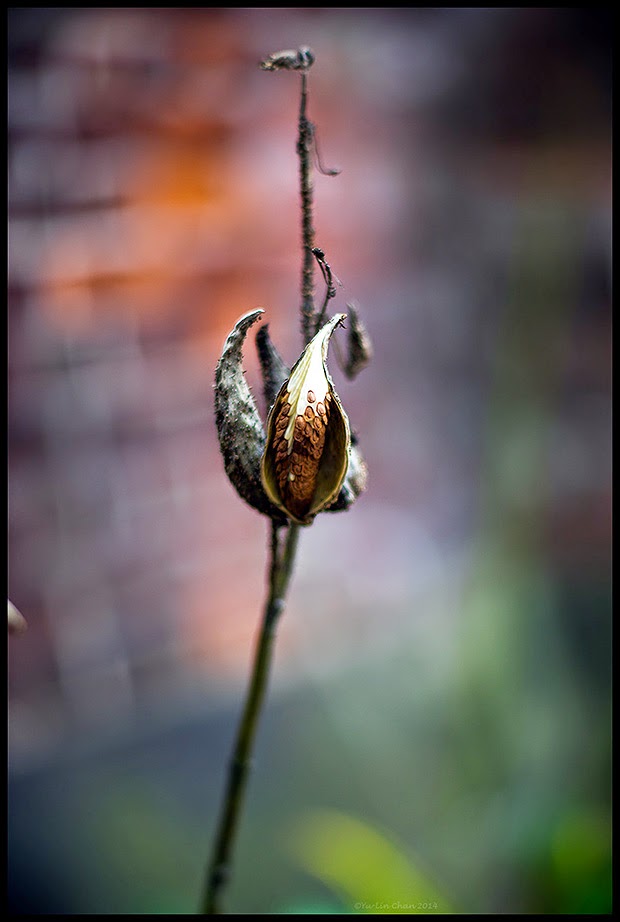I have been neglecting my blog and spending much time on Flickr. Sometimes I think Flickr is a better platform for sharing pictures, since it's easier to upload and you don't need to write anything if you don't want to. But, a blog have its place. It's much better for other form of sharing: information that does not involve pure photographs.
As of late, I have been accumulating quite a few folder cameras or lenses from folder cameras. For those who love uber fast lenses, this post is probably of no interest to you, since most of these lenses are slow to very slow, with maximum apertures ranging from f2 to around f11. But, if you overlook the slowness of the lenses, you will discover that many of them have very unique characters.
Baker's Dozen - Various lenses from folder cameras. The one on top is over a hundred years old.
One of the reasons I like these lenses is because they are usually very easy to remove from the camera; they are mostly held in place by a retention ring inside the camera. Unscrewing the retention ring and the lens comes right off. It's just as easy to put them back. I have a half dozen folder cameras with no lenses inside, but if needed, I can put them back quite easily.
Mounting them on the Sony E-mount cameras is also very easy. Many of these lenses have standard 39mm or 30mm threads. There are adapter rings available on eBay that allows you to screw the lens directly on to the adapter ring, and in turn screw onto the focus helicoid. It's just a matter of adding spacers to get infinity focus, and they don't even need to be precise; just at, or slightly beyond infinity is fine. I have both the 30mm-52mm and 39mm-52mm rings that I use. I haven't encountered any folder lens that has rear mounting thread bigger than 39mm.
The lens is held in place by a retention ring. The red spots indicate the notches where you can use a spanner tool to remove it.
As with everything in life, not all lenses have these nice thread sizes. Quite a few are smaller than 30mm, or larger than 30mm but smaller than 39mm. For these lenses, I just use, or make a "washer" with an opening that's just large enough to go through the lens thread, but covers the gap between the lens and the adapter ring. Now screw in the retention ring to the lens to secure the adapter ring in place. sometimes the gap between the adapter ring and the lens thread maybe too wide, and in that case, try to find or make a smaller ring that fits between the lens and the adapter to prevent it from moving around. After you have done a few of these, you will know exactly what you need to get them mounted properly.
conversion rings: 30mm - 52mm, 39mm - 52mm, 42mm - 52mm, and home made spanner wrench.
For those lenses that don't have the right thread for your conversion ring, use a washer (second item from left) on top of the conversion ring, and then screw on the retention ring.
Sample of how a folder lens is mounted on the focus helicoid. Note the lens itself has a focusing ring. This double focusing ring enables the lens focus very close.
The focus helicoid I use is either the Yeenon 18-33mm, which as an M42 mount at the camera side, and a 52mm opening on the lens side. I have a Yeenon short flange M42-E-mount adapter that connects the helicoid to the camera. See
this blog post for the review of the short flange M42 adapter. For longer lenses, I also use a modified Vivitar 2X Macro focusing teleconverter. These Vivitar macro focusing converters are quite common. Whenever I see one cheap, I buy them if they are $15 or under. I now have 5 or 6 of them. Connecting these teleconverters to the camera is a bit harder but too much so. My preferred method is to buy a reversing ring (any size should be fine, 49mm to 55mm are common and cheap), and glue it to the rear of the converter. Keep in mind that these DIY stuff vary in precision and tolerance; it may not be your cup of tea. Having said that, I do not find it a hindrance for me. I enjoy using lenses this way immensely.
One of the advantage of using a focusing helicoid with these lenses, which sometimes have focusing mechanism of their own, is the much shorter minimum focus distance they were original designed for. Most them would have a 3-feet or 1 meter minimum focus distance, but when mounted on the focus helicoid, you can get it down to about a foot, or even closer if you use both the focusing on the lens and the focusing on the helicoid, while still maintaining infinity focus. An interesting thing is that using a lens closer than it was designed for sometimes shows characters you will not normally see when used as designed. A common trait is the decrease in corner sharpness as the lens focuses closer. I most cases, this is not an issue as most subjects we photograph this close are not perfectly flat. This of course, also changes the look of the bokeh.
I will post some sample pictures from various folder lenses in the coming blog entry.




















































